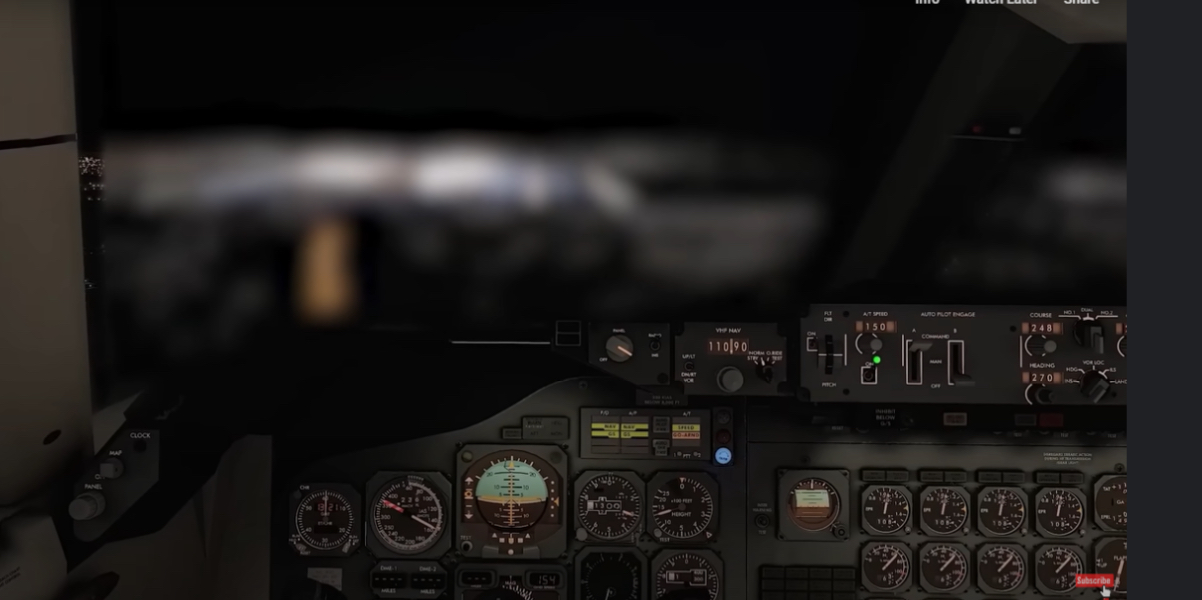The Weekly Reflektion 19/2024
The identification of hazards and the assessment of how these can affect our facility are key factors in preparing people to handle them when they arise. We construct scenarios, we put plans and procedures in place and we train our people so that when that fateful day comes, they will be ready. Yet, still the unexpected happens, and we are then dependent on people adapting to the new situation and responding accordingly. We are talking about ‘resilience’.

The view from the cockpit of Flight 009. Only a thin line on the left-hand side was clear.
Are you expecting the unexpected?
British Airways Flight 009 was a flight from London Heathrow to Auckland, stopping at Bombay, Kuala Lumpur, Perth, and Melbourne. On 24th June 1982 the aircraft, a Boeing 747, took off from Kuala Lumpur. Weather conditions were good. Shortly after take-off the crew noticed blue flashing lights on the windscreen that the crew assumed was ‘St Elmos fire’. This phenomenon is caused by local electric fieldsaround the aircraft and is often observed during thunderstormsas a blue or violet glow, often accompanied by a hissing or buzzing sound. There was however no report of any thunderstorms in the areas and the radar showed clear skies. Smoke, with a distinct sulphurous odour started to accumulate in the passenger cabin and passengers could see blue lights from the engines.
At 13:42 UTC the number four engine started to surge and then flamed out, so the crew performed the engine shutdown procedure. About a minute later engine two flamed out and within seconds engines one and three also stopped. Without engine thrust the glide ratio of a 747 is 15:1, and at an altitude of 37000 feet the aircraft could glide for about 23 minutes and cover 169 km. The crew calculated that they would not be able to fly over the mountains on the island of Java to reach the nearest airport at Jakarta. Problems with the communication system meant that air traffic control at Jakarta believed that that only number four engine had failed and not ‘all four engines’. There were also problems with the in-flight communication system and in an attempt to inform the cabin staff of the problems the captain made a now famous announcement to the passengers.
‘Ladies and Gentlemen, this is your captain speaking. We have a small problem. All four engines have stopped. We are doing our damnedest to get them going again. I trust you are not in too much distress. ‘
Luckily the captain was a glider pilot and could use this experience to optimise the glide path. The crew initiated the engine start procedure on each engine in turn and soon found the procedure too cumbersome to allow maximum number of starts in the time available. The captain waived the procedure and about twelve starts were attempted and failed. There was a problem with the first officer’s oxygen mask and the captain decided to make a rapid descent to 20000 feet to keep the first officer conscious and part of the cockpit team together with the flight officer. At about 13500 feet the crew were considering ditching in the Indian Ocean when suddenly engine four sparked into life. Shortly after the other three engines started, although engine two started to surge and was consequently shutdown. With three engines the crew couldreach Jakarta. However, as they made their approach, they discovered new challenges.
When the lights of Jakarta became visible the crew noticed the windscreen was opaque and almost impossible to see out. They made their approach almost entirely on instrumentsusing the instrument landing system. The vertical guidance system was however inoperative, so they had to fly with only the lateral guidance as the first officer monitored the airport’s distance-measuring equipment (DME). The captain did however have a thin strip of clear visibility on the left-handside of the windscreen, see above figure, and this was enough to help him land. When asked how it was to land the 747 in this condition the captain informed colourfully that, ‘it was a bit like negotiating one’s way up a badger’s arse’.
Mount Galunggung, a volcano on the island of Java erupted at the time the flight took off from Kuala Lumpur and the aircraft flew through a cloud of volcanic ash. The eruption had not been communicated to flight traffic. The ash cloud was not picked up on the weather radar as this is designed to detect moisture in the clouds. The blue sparks observed by the crew was caused by static electricity generated from the ash particles. The ash most likely melted in the combustion chambers of the engines and then adhered to the turbine blades causing the engine failures. When the ash cooled as the aircraft glided it eventually broke off and cleared allowing the restart. It may be that the rapid descent to save the first officer created vibration and additional cooling that dislodged the ash. Luckily there was enough electrical power to crank, ignite, and restart the engines as one generator and the on-board batteries were still operating.
The crew’s resilience and coolness under pressure were important factors in the safe landing at Jakarta.
